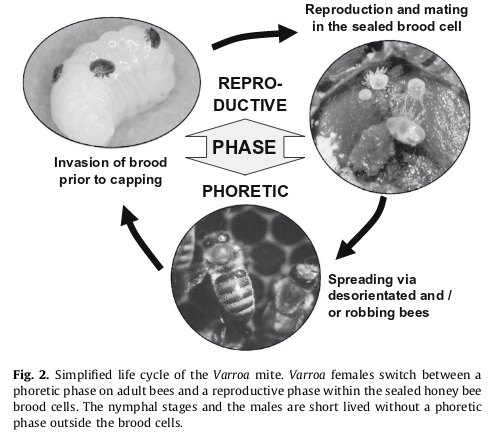This is an old revision of the document!
Table of Contents
Group 9
Run for your hives - Can swarming hinder disease spread in bee colonies?
Wiki site of the practical exercise of the VIII Southern-Summer School on Mathematical Biology.
Here you will find the exercise assignment and the group's products.
If you are a group member login to edit this page, create new pages from it, and upload files.
Introduction
The mite Varroa destructor is the most important parasite of honey bees and a key threat for apiculture worldwide. These mites are obligatory ectoparasites that breed exclusively in the bee larvae, that develop inside the cells of bee hives. Adult mites emerge from these cells and crawl on other bees in the colony, that can carry them within and outside the hive.
The attack by V. destructor are highly lethal, because of its direct expoliation of the hosts and also because the mite is a vector of other pathogens, like the Deformed Wing Virus (DWV). In many temperate regions, human-kept bee hives infested by V. destructor collapse in 3-4 years if left untreated.

Assignment
References
- Diao, Q. and Hou, C., 2018. Does nonreproductive swarming adapt to pathogens?. PLoS pathogens, 14(1), p.e1006742.
- Loftus, J.C., Smith, M.L. and Seeley, T.D., 2016. How honey bee colonies survive in the wild: testing the importance of small nests and frequent swarming. PloS one, 11(3), p.e0150362.
- Rosenkranz, P., Aumeier, P. and Ziegelmann, B., 2010. Biology and control of Varroa destructor. Journal of invertebrate pathology, 103, S96-S119. pdf
